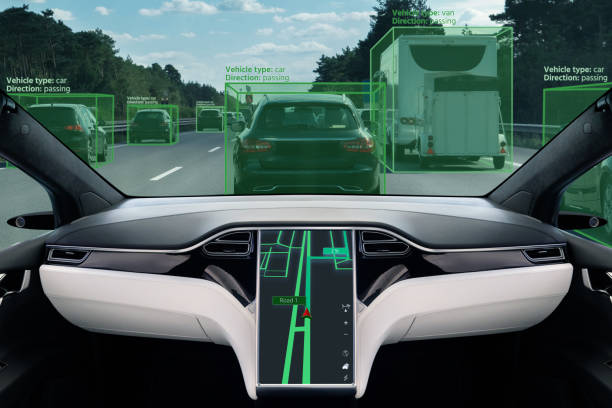The Hidden World of Automotive Radar Systems
Peering through the invisible curtain of electromagnetic waves, modern vehicles are developing an unprecedented awareness of their surroundings. At the heart of this sensory revolution lies automotive radar technology, a sophisticated system that's rapidly reshaping how cars perceive and interact with the world around them. From enhancing safety features to paving the way for advanced driver assistance systems, radar is silently transforming our driving experience.

The Evolution of Automotive Radar
Radar technology in automobiles has come a long way since its inception. Initially developed for military use during World War II, radar found its way into vehicles in the 1970s, primarily as a simple collision warning system. These early systems were bulky, expensive, and limited in their capabilities. However, as technology advanced, automotive radar became more compact, affordable, and sophisticated.
The 1990s saw the introduction of adaptive cruise control, one of the first mainstream applications of radar in passenger vehicles. This system used radar to maintain a safe distance from the vehicle ahead, automatically adjusting the car’s speed. As we entered the 21st century, radar technology in automobiles began to expand rapidly, driven by advances in signal processing and semiconductor technology.
How Automotive Radar Works
At its core, automotive radar operates on a simple principle: it emits radio waves and measures how long it takes for those waves to bounce back after hitting an object. This information is used to calculate the distance, speed, and direction of objects around the vehicle. However, the sophistication lies in how this data is processed and utilized.
Modern automotive radar systems typically operate in the 24 GHz or 77 GHz frequency bands. These high frequencies allow for more precise measurements and smaller antenna sizes. The system consists of a transmitter, which sends out radio waves, and a receiver, which detects the reflected signals. Advanced signal processing algorithms then interpret this data to create a real-time map of the vehicle’s surroundings.
Applications in Modern Vehicles
The applications of radar in modern vehicles extend far beyond adaptive cruise control. Today’s radar systems play a crucial role in a wide range of safety and convenience features:
-
Collision avoidance systems use radar to detect potential obstacles and alert the driver or even automatically apply the brakes.
-
Blind spot detection helps drivers change lanes safely by monitoring areas that are difficult to see in mirrors.
-
Park assist features use short-range radar to help drivers navigate tight parking spaces.
-
Cross-traffic alert systems use radar to detect vehicles approaching from the side when backing out of a parking space.
-
Emergency braking systems rely on radar to quickly detect sudden obstacles and initiate braking faster than a human driver could react.
The Future of Automotive Radar
As we look to the future, automotive radar technology is poised for even more significant advancements. One of the most exciting developments is the move towards 4D imaging radar. Unlike traditional systems that provide basic information about an object’s location and speed, 4D radar can create detailed, three-dimensional images of the environment, including information about an object’s elevation. This enhanced capability will be crucial for fully autonomous vehicles, allowing them to navigate complex urban environments with greater precision.
Another area of innovation is in the integration of radar with other sensing technologies. By combining radar data with information from cameras, lidar, and other sensors, vehicles can create a more comprehensive and accurate picture of their surroundings. This sensor fusion approach is key to developing robust and reliable autonomous driving systems.
Challenges and Considerations
Despite its many advantages, automotive radar technology faces several challenges. One of the primary concerns is interference. As more vehicles equipped with radar systems hit the roads, there’s an increased risk of radar signals from different vehicles interfering with each other. The automotive industry and regulators are working on standards and protocols to mitigate this risk.
Another challenge lies in the interpretation of radar data. While radar is excellent at detecting the presence and movement of objects, it struggles with classification. For example, it may detect an object on the road but have difficulty determining if it’s a pedestrian, a cyclist, or a stationary object. This is why many advanced driver assistance systems rely on a combination of radar and camera technology.
Radar’s Role in the Autonomous Future
As we move towards an autonomous driving future, radar will play an increasingly critical role. Its ability to function in all weather conditions and its long-range detection capabilities make it an indispensable part of the sensor suite for self-driving cars. While other technologies like lidar and cameras have their strengths, radar’s reliability and cost-effectiveness ensure its place in the autonomous vehicle ecosystem.
The ongoing development of radar technology is also focusing on increasing resolution and reducing the size and cost of radar units. These advancements will enable more widespread adoption across different vehicle segments, bringing advanced safety features to a broader range of consumers.
In conclusion, automotive radar technology represents a fascinating intersection of physics, signal processing, and automotive engineering. As it continues to evolve, it promises to make our roads safer, our vehicles smarter, and our driving experience more comfortable. From its humble beginnings as a simple collision warning system to its current status as a cornerstone of advanced driver assistance systems, radar has proven its value in the automotive world. As we look to a future of increasingly autonomous and connected vehicles, the importance of radar technology will only grow, silently guiding us towards a safer and more efficient transportation ecosystem.





